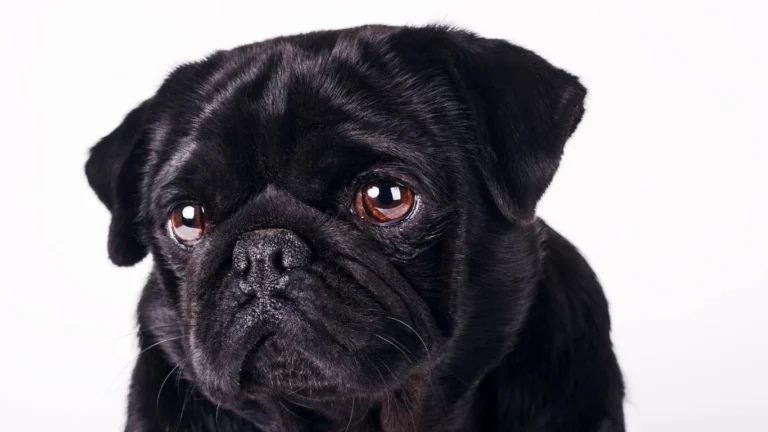How to Get Rid of Dog Tear Stains Naturally: Proven Tips for Success
If you’re a dog owner, you’ve probably noticed those pesky tear stains around your dog’s eyes at some point. I know firsthand how frustrating it can be. As a pet nutritionist and pet care expert with years of experience in veterinary clinics, I’ve seen this issue time and time again. Whether you have a cute little poodle, a fluffy Maltese, or any other breed prone to tear staining, finding a solution is key to keeping your dog looking and feeling great. So, how to get rid of dog tear stains naturally? Well, let’s dive into some safe, simple, and natural methods that have worked for many of my furry clients and their loving owners!
Understanding the Cause of Dog Tear Stains

Before we jump into the remedies, it’s important to understand what causes these tear stains in the first place. Tear stains are common in dogs, especially those with lighter coats, and they usually appear as reddish-brown streaks beneath the eyes. But why do some dogs get them more than others?
In my experience, tear stains are typically caused by a condition called epiphora, which is when a dog’s tear ducts overflow, causing tears to run down their face. Several factors can lead to this issue, such as:
- Breed and Genetics: Certain breeds, like Poodles, Shih Tzus, and Maltese, are more prone to tear stains due to their facial structure and excessive tearing.
- Infections: Bacterial or yeast infections around the eyes can lead to staining. This happens when the excess moisture allows bacteria or fungi to thrive.
- Allergies: Environmental allergens, like pollen or dust, can irritate your dog’s eyes, leading to more tear production.
- Blocked Tear Ducts: Sometimes, a dog’s tear ducts can get blocked, causing tears to overflow. This may require veterinary treatment to resolve.
- Diet and Nutrition: Believe it or not, your dog’s diet can also play a role in tear staining. Poor nutrition or food sensitivities can contribute to tear overproduction.
How to Get Rid of Dog Tear Stains Naturally

Now that you have an understanding of the causes behind those unsightly stains, let’s talk about how you can naturally treat and prevent them. I’ve worked with many dog owners who have found great success using natural methods, and I believe you can too! Here are some tried-and-true techniques that you can start using right away:
1. Keep Your Dog’s Face Clean
It might sound simple, but keeping the area around your dog’s eyes clean can go a long way in preventing tear stains. I recommend gently wiping your dog’s eyes with a soft cloth or cotton ball soaked in warm water or a gentle, pet-safe cleansing solution. Do this daily to remove any built-up moisture or debris. This will help reduce the chances of bacteria or yeast forming around the eyes, which can contribute to staining.
2. Use Natural Supplements for Tear Stains
Another option is using natural supplements designed to help reduce tear stains. Some ingredients, like cranberry extract, probiotics, and apple cider vinegar, can promote overall eye health and reduce tear production. In my practice, I’ve seen supplements like these work wonders in balancing out the tear production process. You can sprinkle them on your dog’s food or give them as treats, depending on the product. Always consult with your vet before adding new supplements to your dog’s routine to ensure they’re safe and appropriate for your dog’s health.
3. Adjust Your Dog’s Diet
As mentioned earlier, nutrition plays a significant role in tear staining. If your dog is prone to tear stains, it might be time to take a closer look at their diet. I’ve helped many dog owners switch to a cleaner, higher-quality food that’s free from artificial additives, preservatives, and low-quality fillers. Foods high in antioxidants, such as blueberries or sweet potatoes, can help combat inflammation, which in turn reduces excess tearing. You might also want to consider switching to a grain-free or hypoallergenic food if food sensitivities are suspected.
4. Try Herbal Remedies
For a more holistic approach, herbal remedies can be a great way to treat tear stains naturally. Some herbs, like chamomile and calendula, have anti-inflammatory properties that can help soothe the eyes and reduce excessive tearing. You can make a simple herbal tea from these ingredients and use it to wipe your dog’s eyes. Just be sure to cool the tea before applying it to avoid any discomfort for your dog.
5. Ensure Proper Hydration
Proper hydration is essential for your dog’s overall health, and it’s no different when it comes to managing tear stains. Dehydration can cause the eyes to produce more tears than usual, so make sure your dog always has access to clean, fresh water. Some dogs love flavored water (like adding a splash of low-sodium chicken broth), which can encourage them to drink more. Keeping your dog hydrated can help reduce the excess tears that contribute to staining.
What About Commercial Products?
While natural methods are fantastic, I understand that some dog owners prefer commercial products for quicker results. There are plenty of tear stain removers available in pet stores or online, but always read the ingredients carefully. I’ve seen too many cases where harsh chemicals in these products can cause skin irritation or other issues. If you do decide to go the commercial route, look for products with safe, natural ingredients, and consult your vet to ensure they’re a good fit for your dog.

Managing Your Dog’s Eye Health for Tear Stain Prevention

Now that we’ve covered the basics of how to get rid of dog tear stains naturally, let’s dive into a few more proactive measures you can take to maintain your dog’s eye health and prevent the issue from returning. Prevention is always better than cure, right? Over the years, I’ve learned that staying on top of your dog’s overall health can make all the difference in reducing tear stains.
6. Keep Your Dog’s Environment Clean
If there’s one thing I’ve noticed, it’s that a clean environment plays a huge role in managing tear stains. Whether you’re dealing with allergies, bacteria, or excess moisture, your dog’s surroundings can have a direct impact on their tear production. I’ve had clients with dogs prone to tear stains make small changes in their homes, and those changes have helped keep the stains at bay. Here are a few tips:
- Clean Bedding: Wash your dog’s bedding, toys, and other frequently used items regularly. Dust and dirt can irritate their eyes, contributing to excessive tearing.
- Air Quality: Keep the air in your home clean. Consider using an air purifier to reduce airborne allergens that could trigger eye irritation.
- Limit Dust and Pollen Exposure: If you live in an area with a lot of outdoor allergens, try to limit your dog’s exposure, especially during peak allergy seasons.
7. Grooming Matters Too
We all know grooming is essential for your dog’s health, but it’s especially important for dogs with tear stains. I can’t stress enough how a regular grooming routine can help keep tear stains under control. Regular trimming of the hair around the eyes can prevent moisture from getting trapped, and it also ensures that debris doesn’t stick around the eye area.
For example, a well-groomed dog will have less fur obstructing their vision or irritating their eyes. If the hair near the eyes is too long, it can rub against the tear ducts and cause irritation, which leads to more tearing. A quick trim with proper tools can make a world of difference in reducing tear stains.
8. Regular Vet Check-Ups
Another crucial element in managing tear stains is regular vet visits. As a pet nutritionist and someone who’s worked closely with veterinarians, I can’t emphasize enough how important it is to have your dog’s eyes and overall health checked regularly. Sometimes tear staining can be a symptom of an underlying issue, like an eye infection, conjunctivitis, or blocked tear ducts. In these cases, seeing your vet will help you get the right treatment and address the root cause.
Additionally, some dogs have a tendency to develop tearing issues as they age, and your vet can help you identify any age-related changes in their eye health. I’ve seen cases where simply getting the right medication or eye drops cleared up the issue, so don’t hesitate to ask your vet about it.
Alternative Natural Approaches for Tear Stains

If you’re looking for more natural remedies, I’ve got a few more tricks up my sleeve that have worked wonders for some of my clients. While there’s no one-size-fits-all solution, experimenting with some of these alternative approaches could give you the results you’re looking for. Here are a few to consider:
9. Try a Pet-Friendly Face Wash
There are some excellent face washes on the market that are designed specifically for dogs and can help reduce tear stains. These products are made with safe, natural ingredients like aloe vera, chamomile, and lavender, which can soothe your dog’s skin and reduce irritation. I’ve had clients rave about the effectiveness of these washes, especially when used regularly. Just be sure to choose one that’s free of harsh chemicals or fragrances to avoid further irritating your dog’s sensitive skin.
10. Apple Cider Vinegar Solution
Apple cider vinegar is a well-known remedy for many pet-related issues, and it can also help with tear stains. In my experience, adding a small amount of apple cider vinegar to your dog’s drinking water can help balance their body’s pH levels and reduce tear production. It also helps prevent the build-up of bacteria or yeast, which can contribute to the staining. Start with a teaspoon for small dogs and a tablespoon for larger dogs, and be sure to monitor their reaction.
Some dog owners have found success by applying diluted apple cider vinegar to the stained areas with a cotton ball. However, make sure the vinegar is diluted (mix with water in a 1:1 ratio) to prevent irritation, especially if your dog has sensitive skin around their eyes.
11. Coconut Oil for Tear Stains
Coconut oil is another natural remedy that I highly recommend. Not only is it great for moisturizing dry skin, but it also has antibacterial and anti-inflammatory properties that can help with tear staining. You can gently apply a small amount of coconut oil to the stained areas using a cotton ball or your fingers. Over time, this can help lighten the stains and soothe the skin around the eyes.
Additionally, you can add a bit of coconut oil to your dog’s food. It’s a healthy fat that can support your dog’s overall health and even help with digestion. Just be careful not to overdo it—start with a small amount and gradually increase it to avoid any digestive upset.
Does Homeopathy Have a Role in Tear Stain Treatment?

Homeopathic remedies are another natural treatment option that some dog owners turn to for managing tear stains. Homeopathy involves using small, highly diluted doses of natural substances to stimulate the body’s healing process. While it’s not always a first choice, I’ve had some clients see positive results with homeopathic remedies, especially when paired with other treatments.
Common remedies used for tear stains include Silicea (which is believed to help with skin conditions and excess tearing) and Calcarea Fluorica (which is thought to support tissue health and prevent excessive tear production). Keep in mind, homeopathic treatments should always be used under the guidance of a qualified homeopath or vet familiar with the practice.
When to Seek Veterinary Help for Tear Stains

While many tear stains can be managed with natural remedies and home care, there are instances when seeking professional veterinary advice is necessary. As much as I love helping dog owners find natural solutions, sometimes tear stains are a sign of a deeper underlying issue. From my personal experience, I’ve seen many dogs whose tear staining was due to chronic eye conditions or even health issues unrelated to their eyes.
Here are some signs that you should consult with your vet:
- Excessive Tearing: If your dog’s eyes are producing an abnormally large amount of discharge, it may indicate a more serious issue that needs professional attention.
- Redness or Swelling: Redness or puffiness around the eyes, especially when combined with tear stains, can signal an infection or inflammation.
- Changes in Behavior: If your dog seems to be in pain, such as squinting or rubbing their eyes frequently, it may be a sign of an eye injury or infection.
- Blocked Tear Ducts: Blocked tear ducts can cause excessive tearing. If your vet suspects this, they may recommend flushing the tear ducts to restore normal tear drainage.
- Recurring Stains Despite Care: If the tear stains persist despite consistent care and natural remedies, there could be an underlying medical condition at play that needs to be addressed.
Remember, your vet is your partner in ensuring your dog’s overall health. Don’t hesitate to reach out if you notice anything unusual. I’ve had clients whose dogs have had chronic tear stains only to discover a treatable condition like conjunctivitis or a minor eyelash issue that could be easily resolved. So, trust your instincts as a pet parent, and don’t be afraid to seek help when needed!
Maintaining Long-Term Tear Stain Prevention

As you continue your journey of managing your dog’s tear stains, it’s important to remember that tear stains can be an ongoing challenge. However, with the right combination of natural remedies, regular grooming, and a healthy lifestyle, you can significantly reduce and even prevent them from reoccurring. From my experience, consistency is key, and if you stick with a good routine, your dog will look and feel much better over time.
Regular Grooming and Hygiene
Consistent grooming is a must. I’ve seen countless dogs who only get occasional grooming, and that’s when tear stains tend to worsen. Keeping your dog’s face clean, trimming hair around their eyes, and regularly wiping away any moisture helps prevent staining. It’s a small effort that pays off in the long run, not just for tear stains but also for your dog’s overall comfort and health.
Healthy Diet for Tear Stain Prevention
Another critical factor is diet. You’ll want to ensure that your dog is eating a balanced, high-quality diet that supports their overall health. I’ve seen many cases where switching to a high-quality, hypoallergenic, or grain-free food has reduced the tear stains significantly. If you suspect your dog may have food sensitivities, I highly recommend discussing a potential food trial with your vet. It can help you pinpoint the culprit and avoid the triggers that are causing excessive tearing.
Hydration and Wellness
Proper hydration is another simple yet effective way to help prevent tear stains. When a dog is hydrated, their body can function more efficiently, including tear production. If your dog is drinking plenty of water, they are less likely to experience overproduction of tears. I also recommend offering clean water at all times and ensuring they drink enough throughout the day. This is especially important for dogs that are more prone to tear stains due to their facial structure.
Stay On Top of Vet Visits
Finally, never underestimate the importance of regular veterinary check-ups. Regular visits allow your vet to check for any underlying health conditions that may be contributing to tear stains. If you’re on top of your dog’s overall health, there’s a good chance that the tear stains will be much easier to manage or prevent altogether. I’ve had clients whose dogs had occasional tear stains that cleared up after a few simple vet visits and dietary adjustments.
References
For more information about dog tear stains, health tips, and natural remedies, check out these helpful resources:
- PawPatron – Your Pet Health Resource
- Google Search – Veterinary Advice on Tear Stains
- PetMD – Expert Advice on Pet Health
Disclaimer
The information provided in this article is based on my personal experience as a pet nutritionist and pet care expert, as well as general advice from reputable sources. It is not intended to replace professional veterinary advice, diagnosis, or treatment. Always consult your veterinarian before making any significant changes to your dog’s diet, health, or treatment plan.
While natural remedies can be effective for some dogs, results may vary. It’s important to monitor your dog’s response to any treatments and adjust accordingly. If you have concerns about your dog’s health, please seek professional veterinary help.






